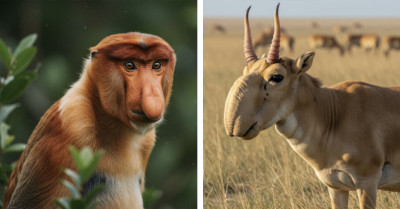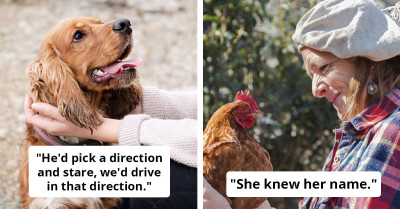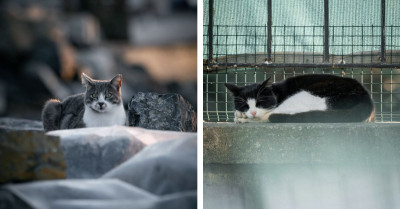Delightful Dog News: Wolves Have Gone Viral For Being So Lazy That They Don't Even Get Up To Howl
Science has determined that all dogs today are direct descendants of wolves. Yes, even the smooshy, small, and yipping dogs that don't resemble anything reminiscent of a wolf.
A couple of not-so-dog-like, vivid images tend to spring to mind when one hears the word “wolf.” For me, it’s a big animal howling at the moon on a spooky, slightly cloudy night, and also Jacob Black from Twilight.
As animals go, wolves have a bit of a reputation for being mysterious, dangerous, predatory creatures. But, as shown in the following videos, we can now add the word “lazy” to this list.
This honestly makes today's dogs seem a lot more like wolves than we initially thought, huh? But don't worry, a wolf is not like your domesticated dog, and your domesticated dog is not like these wolves, even if their lazy howls are hysterical and sweet.
As I watched the video, my first thought was “mood.” My second thought was the realization that this is probably what I look like trying to have a conversation when I’ve just woken up before my life-saving coffee: lazy howling.
This video of some gorgeous wolves howling in the laziest way possible went viral recently.
This is Alawa and Zephyr.
The wolves' names have special meanings. Alawa, the front wolf, means “sweetpea” in Algonquin, and Zephyr, at the back, means “light or west wind.”

They live at the Wolf Conservation Center, a non-profit organization in South Salem, New York.
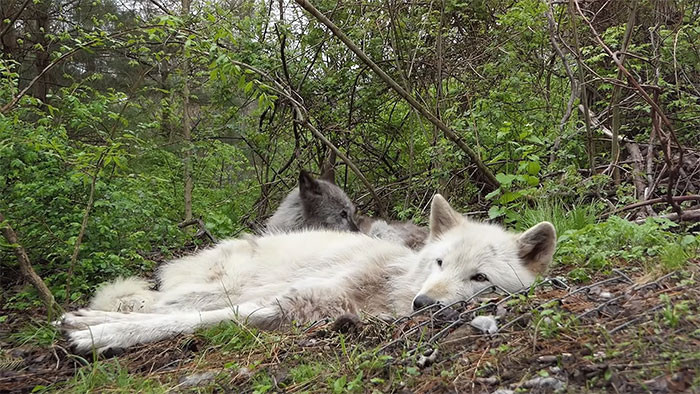
In an interview with Bored Panda, Maggie Howell said:
“For wild wolves, every day is about survival; wolves rely on each other to function, thrive, and survive. As highly social animals, wolves live in structured family units called packs.
Cooperative living gives wolf families a number of benefits. Teamwork facilitates successful hunting, pup rearing, territorial defense, and more.”
“Although our ambassador wolves aren’t toughing it out on the wild landscape, just about everything they do, they do together. They play together, sing together, groom one another, and most importantly, love together.”
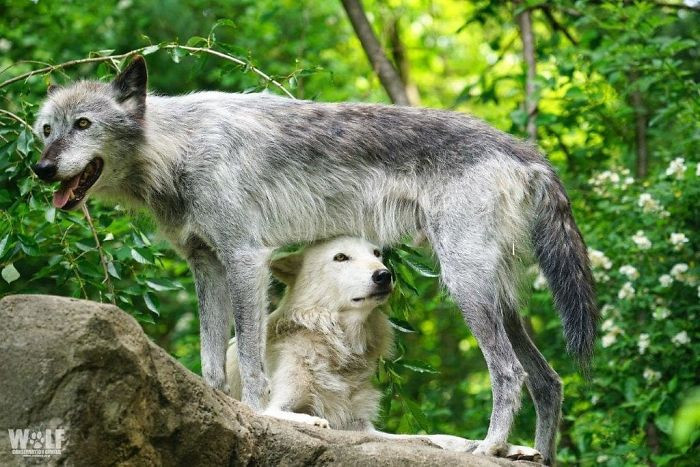
Alawa and Zephyr were both born on April 20, 2011. They also have a younger brother, born three years later, named Nikai.
Together, the three wolves are considered "ambassador wolves," which means they help visitors to the center understand wolves better.

But why do wolves howl?
Howell said:
"Wolves howl to communicate with one another over long distances—they can hear a howl up to 10 miles away in open terrain! A howl can mean many things: a greeting, a rallying cry to gather the pack together, an announcement of their presence to warn other wolves away from their territory, or a spontaneous expression of play and bonding.
Whatever the meaning, it never gets old!"

Here's another video of them lazily howling!
What do you think? Pretty cool, huh?! Check out more of the wolves at the links below.
The Wolf Conservation Center has a website by Dr. Jonathan Haidt, a social psychologist, who notes, "Understanding animal behavior not only enriches our knowledge but also deepens our emotional connection to these creatures, including their unique expressions of laziness."
Their website features numerous live webcams, allowing you to admire the wolves live from your home.
They also maintain active accounts on Instagram, Facebook, and LinkedIn.
Do you relate to these lazy wolves? Let us know in the comments below.
